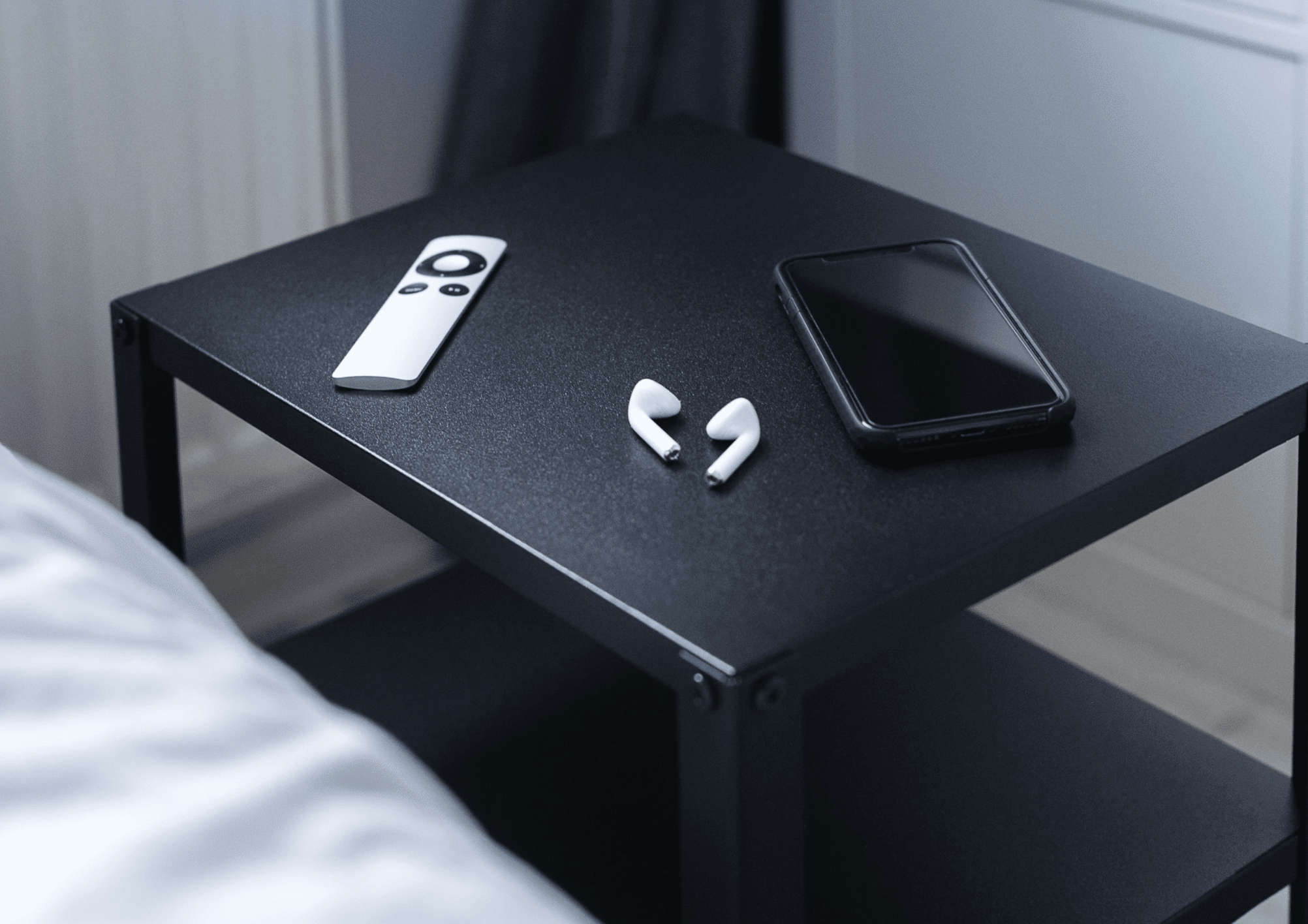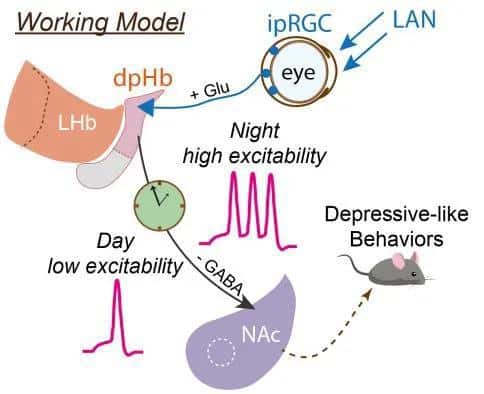What do you usually do before you go to bed? If you're always watching TV or staring at your computer or phone for long periods of time, then the following research paper, just published online in Nature-Neuroscience, might give you some health reminders.
A team of researchers led by Professor Xue Tian from the University of Science and Technology of China and Dr. Zhao Huan from Hefei College found that increased blue light at night affects specific neural loops in the brain, which can cause depression-related symptoms.
In the paper, the scientists noted that light affects a variety of physiological functions in mammals, including mood.
On the one hand, many studies show that a moderate amount of sun exposure during the day can enhance mood, the use of "light therapy" to supplement the light, can relieve the symptoms of depression patients.
On the other hand, excessive light at night from light pollution or electronic devices is considered to be at risk of causing depressive symptoms.
Although the circadian preferences of mice are opposite to those of humans, their behavior is equally affected by daily light changes and circadian rhythms. The research team first designed experiments to verify this.
Experimental design schematic: the mice in the experimental group were exposed to increased blue light (LAN) at night and then observed for changes in their behavior.
They irradiated the mice with blue light for 2 hours each night for 3 weeks in a row.
After increasing nighttime lighting, the circadian rhythm of the mice was not altered, but some abnormal behavior gradually appeared.
For example, when forced to swim, it gives up with a fidgety abandon. In the face of sugar water, paranoia drops - happy water isn't happy anymore.
Because these behaviors bear some resemblance to human depressive behavior, scientists have defined them as depression-like behaviors.
Not only that, but the mice did not recover immediately after the cancellation of the nightly blue light exposure, and the depression-like behavior continued for up to 3 weeks.
The results of the forced swimming experiment and the sugar-water preference experiment showed that mice were exposed to blue light for a continuous period of nights with altered behavior.
So why does the increased light at night cause depression-like behavior?
Next, the team used neural tracer tools to find a specific neural loop, which in turn revealed possible neural mechanisms behind the phenomenon.
Specifically, this neural loop begins in the retina, where a class of ganglion cells (abbreviated as ipRGC) is distributed, which express a protein involved in regulating the biological clock.
These cells are sensitive to light, and when they are activated by light, they send signals to the dorsal side of a nucleus cluster in the brain called the lateral reins (dorsal perihabenular nucleus, or dpHb), where a portion of the nerve cells subsequently project to the volvulus nucleus (NAc).
And these two brain regions are closely associated with depressive symptoms.
Of these, the lateral reins, often referred to as the "anti-reward hub" of the brain, mediate many negative emotions, and its overactivity can induce depressive-like behavior.
The volt septum is associated with euphoria and is involved in the formation of depression.
When researchers blocked the neural connection between the lateral reins nucleus and the volvulus nucleus in the mouse brain, it prevented depression-like behavior induced by nighttime light, suggesting that this neural loop plays an important role.
The researchers proposed a neural pathway by which increased light at night causes depression-like behavior.
One might have to ask, since this neural loop is activated by light, what about during the day?
Upon comparison, the study authors found that nighttime light activated this neural loop much more intensely than daytime light, which may explain why daytime light did not cause behavioral changes.
During the discussion session of the paper, the scientists also noted that whether or not this discovery can be extrapolated to humans requires careful thought.
After all, mice experiments have their limitations, such as the mice themselves hate the light, so the negative emotions towards the light may be extra strong.
Also, behaviors such as not favoring sugar water can be caused by other causes, not necessarily the same as true human depression.
However, the authors conclude that identifying the neural pathways in the brain that are affected by increased light at night is the first step to recognizing what effect it has on mood.
If the same neural loops are activated by light in humans, these results may help explain how excessive nighttime light affects humans and why it is associated with depressive symptoms.
In fact, just a while ago scientists also found ipRGC ganglion cells in the human retina, the first stop on this nerve loop.
With the advancement of industry and technology, night lighting is becoming more and more common, many people live under the neon lights of the "no-night city", and when the landscape lights go out late at night, they return home and continue to be accompanied by the blue light from electronic devices.
However, over millions of years of evolution, humans have adapted to the changing light of day and night, and when there is too much light at night, our health and mood may be quietly being negatively affected.










